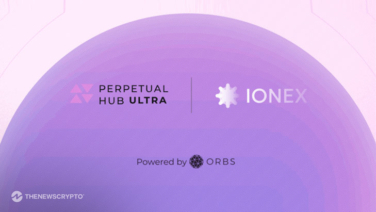Curtin University’s Research and Development Blockchain Lab has recently announced its partnership with Envision. Together, they’ll be seeking to provide a peer-to-peer platform where creators can sell their stock images to other users using smart contracts on the blockchain. This NFT format puts the power back in the hands of creators and helps them overcome the middle-man fees that major stock media sites take from them.
The Research and Development Blockchain Lab is headed by Vidy Potdar, who has a P.h.D in Digital Image Watermarking and Steganography. This project represents a confluence of his professional and academic experience, with him stating that “The revenue that Web2 solutions can generate via stock media creators suggests that the market is ripe for disruption, with the knowledge and experience Curtin’s Blockchain R&D Lab brings to the table Envision will be strongly positioned to be a market leader.”
Envision seeks to push the stock media market into the next phase, innovating from traditional web 2.0 pathways in which creators have no power into a web 3.0 system where what creators say goes. On the blockchain, a smart contract can be created directly between two parties, making this opportune for a creator selling their stock photos.
While traditional Web 2.0 platforms typically take up to 80% of the revenue from these stock photos, the minting of the stock photos as NFTs will ensure that the creator has direct ownership of their photos. From there, they’ll also have the power to set their own prices and negotiate within peer-to-peer contracts.
By using the blockchain technology proposed by Curtin University, Envision is revolutionizing the stock image industry and taking power away from monopolized middle-man platforms. Commenting on this, the CFO and Co-Founder of Envision, MIles Bradley, commented, saying that “Leveraging Curtin’s Blockchain Lab will fast track our development and adoption making sure we are in the best position possible to achieve our goal of supporting the creators who have succumbed to greedy Web2 solutions for too long.”
The combination of these two organizations presents a perfect opportunity, with blockchain bringing innovative features to an industry that was much in need of a change.
Envision will be powered by VIS tokens, forming the exclusive payment pathway within the Envision marketplace. A user will be able to exchange VIS tokens for an NFT-associated piece of stock media, directly trading with the owner of the piece rather than through a centralized platform. These tokens will act as Envision’s fungible ERC20 utility tokens, facilitating trades, incentivizing platform participation, and funding the platform directly.
The VIS tokens are generated by LCX AG, which is regulated by the Financial Market Authority of Liechtenstein, where the company is based. This comes after the parliament of Lichtenstein passed the Trusted Technology Service Provider Act (TVTC), more commonly known as the ‘Blockchain Act.’
This legislation outlines the critical function that the token economy can play, outlining several licensed roles. One of these is the Token Generator by LCX AG. To operate under the law, token generators must integrate internal control mechanisms to ensure that every token has proper documentation. Due to this comprehensive level of legislation from the parliament of Liechtenstein, the tokens that run this project are protected under insurance.
With a strong prospect, parliamentary backing, and a knowledgeable team leading the way, Envision is certainly a company to watch over the coming months.








